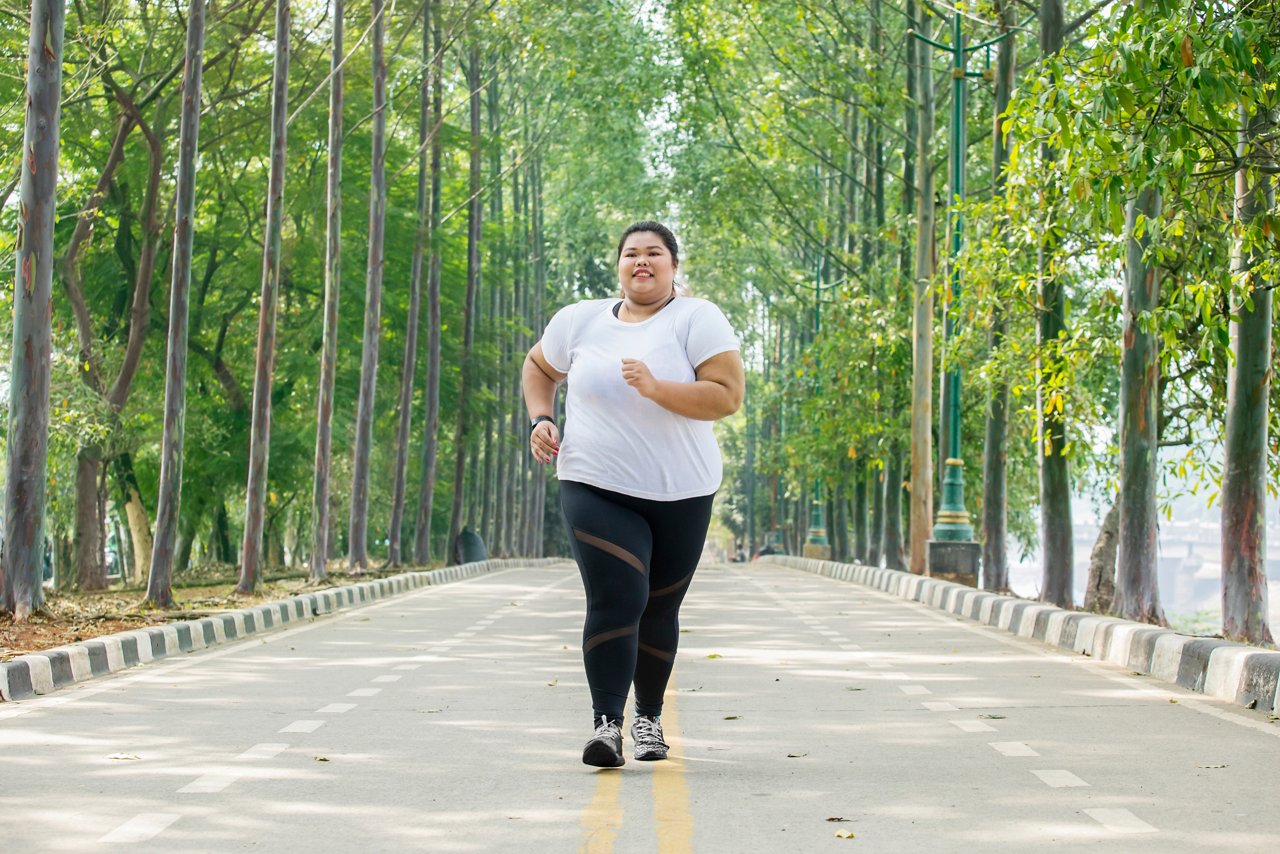4 heart-healthy exercises for beginners

February is American Heart Month, a reminder that our lifestyle is important to helping us stay healthy and feeling our best.
Cardiovascular disease is the leading cause of death in the US, according to the Centers for Disease Control and Prevention (CDC). The good news is that in most cases, heart disease is preventable through healthy lifestyle changes. And regular exercise is an important part of that.
The best workout is the 1 that you enjoy, so that you’ll keep doing it regularly. Research shows these exercises are excellent for a healthy heart and overall well-being:
- walking
- cardio
- strength training
- yoga
1. Walking
Walking is 1 of the simplest and best forms of exercise for heart health. The CDC says any amount of walking can lower your risk for cardiovascular disease and additional risk factors, such as diabetes.
You can increase your energy and get fit with this 4-week walking plan. If you have mobility limitations, walking can be done as seated marching.
2. Cardio
Cardiorespiratory exercise — also called cardio or aerobics — helps strengthen your heart and lungs. This type of exercise increases your heart rate and gets you breathing faster. Examples include dancing, jumping rope, swimming, bike riding, hiking, or doing calisthenics such as jumping jacks.
Aerobics can be done standing or seated. Sit toward the front of your chair so that your legs have room to move.
A great way to get cardio exercise is to join a group fitness class, either in person or online.
3. Strength training
Not only does strength work build and maintain muscle mass, which can decrease with age, lifting weights is a physical activity that helps prevent chronic diseases.
Here are 5 upper body strength-building exercises. Beginners can start with 1-, 2-, or 3-pound dumbbells, or 2 cans or water bottles.
Biceps curl: Begin standing straight with your feet shoulder-width apart. Keep your chest up and shoulders back and down. Hold dumbbells with palm facing up. Keeping your elbows close to your body, bend your elbows and slowly lift the dumbbells toward your shoulders. Then slowly lower the weight to the starting position.
Triceps kickback: Hinge forward from your hips, keeping your knees bent. Keep your head, neck and spine in alignment, and your abs engaged. Hold a dumbbell in each hand, palms facing your body, elbows bent. While keeping elbows close to your body, bend and straighten your arms back. The emphasis should be on pressing back, more so than bringing your hands up in front. Don’t swing your arms – only your forearm should move.
Hinged forward row: This one naturally follows the triceps kickback and is a good upper back exercise. Staying in the same hinged-forward position and keeping your knees slightly bent, bring your arms straight down in front of you, palms facing in. Lift and lower the dumbbells by bending and straightening your arms. As your arms rise, keep the elbows back (like chicken wings), and squeeze your shoulder blades. Then lower your arms. Only your arms should be in motion.
Upright row: Stand straight with your feet shoulder-width apart and arms down, holding dumbbells with your palms facing your body. Bend your elbows and lift the dumbbells up toward your chest, keeping hands close to the chest, and elbows out as your arms lift. This movement is like pulling your pants up to your chest.
Shoulder press: This can be done with alternating arms, or both arms at the same time. Stand straight with feet shoulder-width apart. Hold a pair of dumbbells, palms facing inward, at shoulder height. Slowly lift dumbbells, keeping them directly over your shoulders. Then lower the dumbbells back down to shoulder height. Keep shoulders neutral throughout; don’t elevate shoulders.
If you have pre-existing shoulder issues, do it without weights until you check with your doctor or physical therapist.
4. Yoga
Research has shown that yoga is a heart-healthy exercise that can lower blood pressure, body mass index, and cholesterol. In yoga, coordinating breath with movement relieves stress and calms the mind. Here’s 1 of my favorite movements.
Cat-cow is a beneficial and relaxing stretch for the back that involves expanding and contracting your torso. It starts with an arched back and flows to a rounded position. In this sense, we are working both the front and the back of the body evenly. This exercise works your spine, back, abdominals, shoulders, hips, and pelvic floor muscles. It can help relieve an achy back from stiff muscles.
Traditionally cat-cow is performed on the floor on your hands and knees. You can also do it standing or seated, which is shown.
Standing cat-cow: Stand with your knees bent and hands on your knees. Inhale deeply and look up as you drop your belly and arch your back. Exhale as you slowly round your back, tucking your chin into the chest, drawing your shoulder blades away from one another. Repeat several times.
Seated cat-cow: Sit up straight with your hands on your lap, shoulders back and down, and both feet flat on the floor. Inhale deeply, and look up as you arch your back, open your chest and gently squeeze your shoulder blades together. Exhale as you slowly round your back, tucking your chin into the chest, and sliding your hands forward toward your knees. Repeat several times, moving slowly and mindfully throughout.
Try these 5 yoga poses to help you become more balanced and less stressed.
Bonus: A workout that brings it all together
The above exercises can be done as a circuit workout, while standing or seated:
- Aerobics: Marching or dancing, 1 minute
- Strength: Do the dumbbell exercises shown above, 8 reps each
- Yoga: Cat-cow, 4 reps
- Start over and repeat for 1-3 rounds
How much exercise do you need?
The CDC recommends that adults get a weekly total of at least 150 minutes of moderate aerobic activity, or 75 minutes of vigorous aerobic activity or a combination of both. That means 150 minutes a week is just 30 minutes a day, 5 days a week. The CDC also advises to include muscle-strengthening activity at least twice a week.
However, it’s alright to start with less. Even a small amount of exercise counts and is better than doing nothing. The important thing is to take time to move every day, and to make it a habit.
If you are not used to exercising or if you have pre-existing conditions, it’s a good idea to check with your health care provider before beginning a new fitness program to make sure that it’s right for you.
I’m leading 2 free online classes: Chair Fit and Wellness in Motion. They're sponsored by the Blue Cross and Blue Shield of North Carolina (Blue Cross NC) Raleigh location and open to all.
Browse related articles

Blue Cross and Blue Shield of North Carolina does not discriminate on the basis of race, color, national origin, sex, age or disability in its health programs and activities. Learn more about our non-discrimination policy and no-cost services available to you.
Information in other languages: Español 中文 Tiếng Việt 한국어 Français العَرَبِيَّة Hmoob ру́сский Tagalog ગુજરાતી ភាសាខ្មែរ Deutsch हिन्दी ລາວ 日本語
© 2024 Blue Cross and Blue Shield of North Carolina. ®, SM Marks of the Blue Cross and Blue Shield Association, an association of independent Blue Cross and Blue Shield plans. All other marks and names are property of their respective owners. Blue Cross and Blue Shield of North Carolina is an independent licensee of the Blue Cross and Blue Shield Association.




